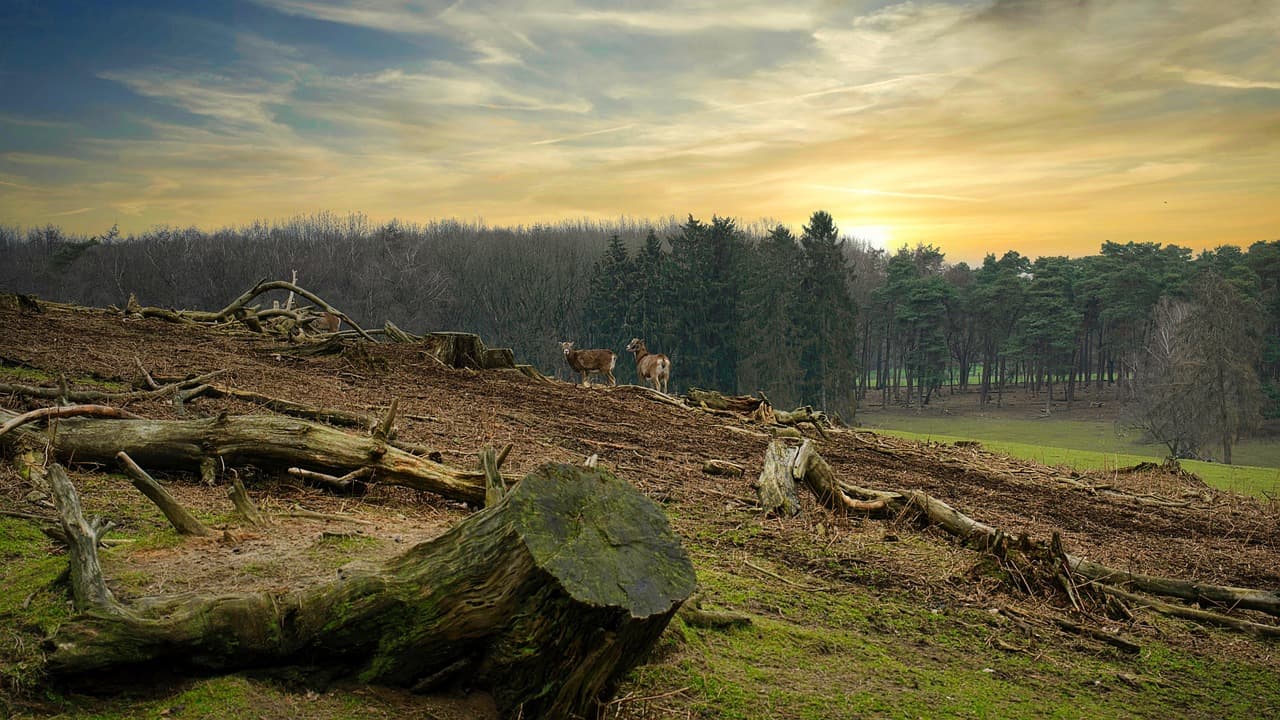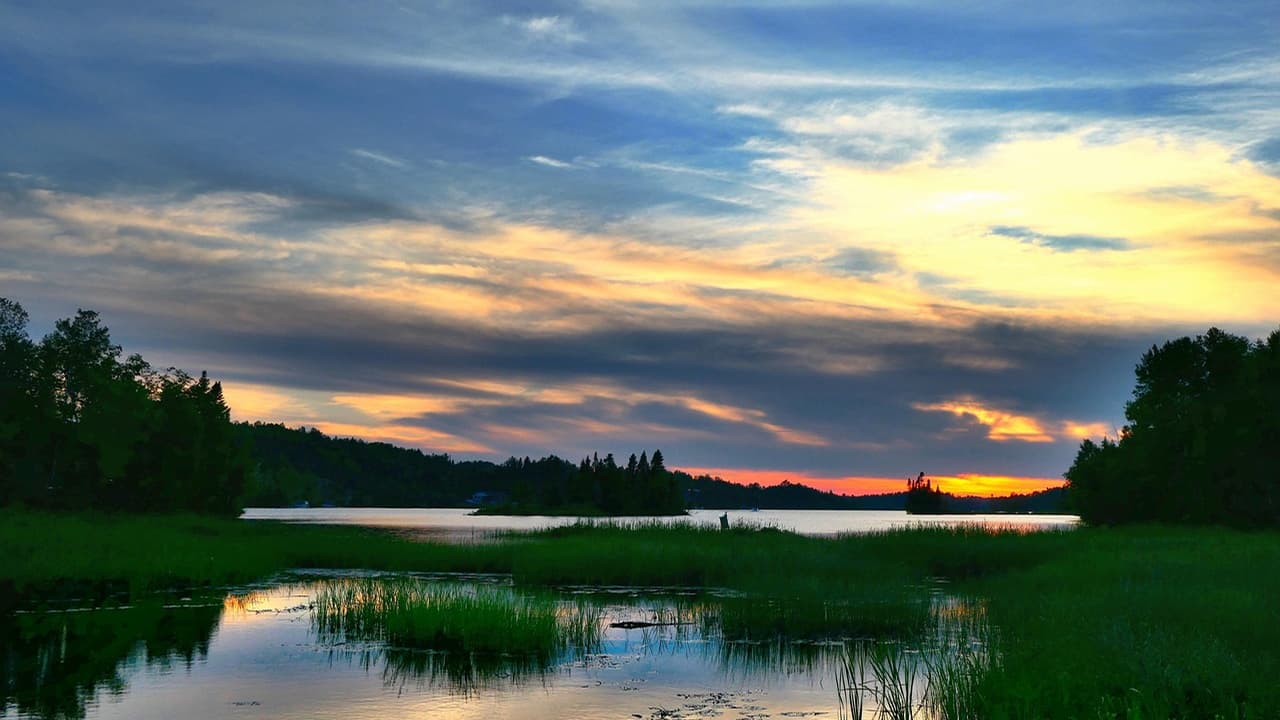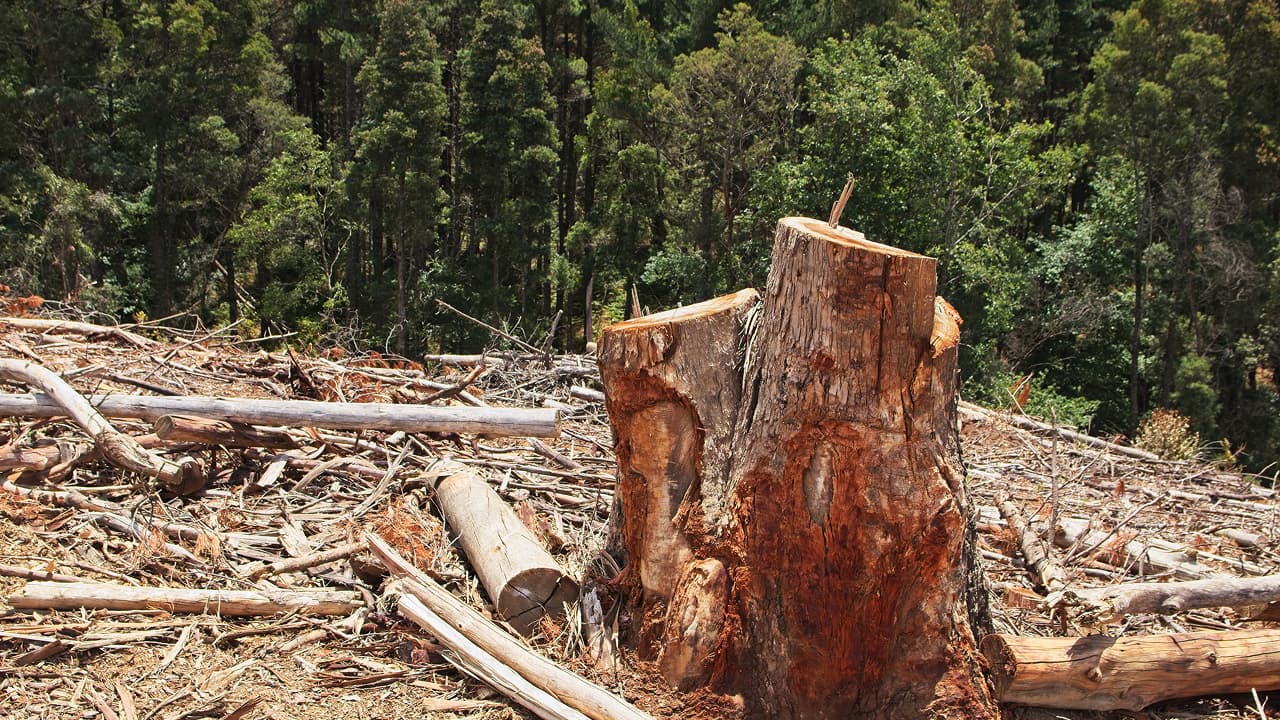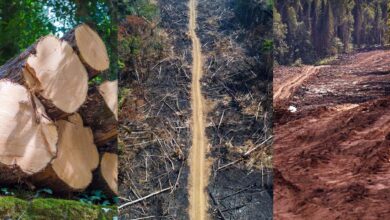Deforestation and Biodiversity Loss: Understanding the Ecological Impact
The forests are more than just trees; rather than are an intricate ecosystem of organisms that play a great role in maintaining the ecological balance. However, this harmonious thing is now declining increasingly with the acceleration of deforestation. Thus, leading to great impact of deforestation on biodiversity.
Forests cover nearly a third of Earth’s land area (more than 80%) and provide homes to terrestrial species. This sustains biodiversity on a global level. However, the impact of Deforestation on Biodiversity is becoming a critical concern in this context.
Table of Contents
You might be thinking about what happens next when forests disappear. And how does it disrupt the lives of the species relying on them, whether big or small? Let’s find out!
Understanding Deforestation

The term Deforestation means the clearing of forests on a large scale for major reasons like agriculture, logging, or urban expansion. There’s nothing surprising in that, as it’s not a new issue, but the pace has been rising daily.
As per the World Wildlife Fund (WWF), every minute we lose forests equal to 30 football fields.
Deforestation is of two main types. These types are:
- Clear-Cutting: The clear-cutting method is the complete removal of trees from a forested area.
- Selective Logging: The selective logging refers to the removal of trees of specific types. However, they can still disrupt the habitats. This again contributes to the impact of deforestation on biodiversity, even when do not remove all trees.
The primary influences of deforestation include:
- Commercial agriculture (especially soy, palm oil, and cattle ranching)
- Infrastructure development
- Illegal logging
- Mining activities
Biodiversity and Its Importance

Don’t take biodiversity as a fancy term. Instead, take it into serious consideration. Biodiversity is the variety of living forms existing on our planet Earth. This variety may include all plants, animals, fungi, and even tiny bacteria. Each single living organism has a huge role that it plays in the balance of the ecosystem. The Biodiversity makes sure:
Stability in Ecosystems
The first thing that comes in on the top is the stability in the ecosystems. It’s a critical function as the diverse ecosystems are more prone to such issues, including fluctuations in climate, diseases, and many more.
Pollination and Soil Fertility
Then there is pollination, which is a kind of service that stands as a vital component in the reproduction of many plants. And it is performed by a range of species, including bees, butterflies, birds, and bats. So, if any pollinator species faces a loss, it will automatically disturb the food production and regeneration of natural plants.
You Might Like to Read: The Impact of Deforestation on the Water Cycle
Soil fertility is the second aspect closely related to biodiversity. A host of organisms, including earthworms, fungi, and bacteria, make a huge contribution to nutrient cycling, decomposing organic matter, and maintaining soil structure. Perhaps, these processes are suitable for plant growth and agriculture.
Clean Air and Water
Clean air and water also stand to be vital products among species for their complex interactions. An example here can be of Forests, which act as carbon sinks. They absorb carbon dioxide and release oxygen, whereas the wetlands filter out all the water pollutants.
Natural Resources Like Food, Timber, And Medicine
The biodiversity also provides humans with natural resources. As the forests are a great source for such resources by supplying timber, nuts, fruits, and some other products as well, to run the economies and livelihoods smoothly.
Direct Effects of Forest Loss on Wildlife
The deforestation directly impacts the biodiversity, bringing out loss of habitat, extinction of species, and disturbance in the ecological processes. It is a death sentence for many living species. Let’s have a look at the direct impacts it has:
Habitat Loss and Fragmentation
One of the most frequent consequences brought by desertification is the fragmentation and habitat loss of countless species. The orangutans, jaguars, and parrots are the animals that have direct affect. They lose their sources of food and homes as well. All of these are part of the broader impact of deforestation on biodiversity and ecosystem health.
According to the IFAW (International Fund for Animal Welfare), even a partial forest loss can have drastic impacts on animals, making them vulnerable to starvation and predators.
Many species cannot survive in those patches of forests that are fragmented. The fragmentation of habitat has continuous effects by dividing the forests into smaller, isolated patches and disrupting the breeding patterns. The isolation that happened here leads to decreased resilience and inbreeding towards environmental changes.
Species Extinction
A significant driver of the extinction of species is forest loss. This destruction of habitats will decline the population, even in some cases lead to extinction. Those species are vulnerable and require a specific habitat.
Here is an example of gibbons in Southeast Asia, where they face dire threats. These threats are due to reasons like habitat loss from logging, agriculture, and infrastructure development. With the forest loss, these gibbons also lose their sources of both shelter and food, later on reaching them towards extinction.
Disruption of Migration Patterns
The migratory patterns are disturbed by erosion. Many migratory birds and even mammals are affected by forest loss. The reason why it happens depends on these forests for their survival, including resting, feeding, and breeding during their journeys.
Related Pick: Agricultural Growth and Forest Loss: Finding Harmony
So, when the forest loss happens, it interrupts these routes and leads to low rates of survival and reproduction. These disrupted cycles are yet another impact of deforestation on biodiversity.
Indirect Outcomes of Forest Clearance
The deforestation brings out some indirect impacts on the human world, causing environmental changes for every living being. These indirect impacts are not visible immediately but have lasting impacts.
Climate Change
The forests are a great source of absorbing carbon dioxide from the air, which eventually helps in fighting climate change. But, the sad reality is that when the forest went through lost, they are unable to store much carbon, which later on releases harmful gases into the atmosphere.
It makes the situation worse with changes in rainfall and temperature, vice versa. The changes are harmful to the survival of animals and plants due to the reduction in diverseness.
Soil Erosion
The roots of the trees are crucial in keeping the soil intact and stopping it from erosion. It acts as a natural support system, and this system gets lost with the loss of the forest. In some cases, when the top layer of soil is lost, it makes the land less fertile. While in extreme cases, it damages the healthy land to a dry and empty area.
Related Pick: Causes of Deforestation: Human Choices & Environmental Impact
The soil that gets eroded can flow into lakes and rivers, which makes the water dirty and a harmful cause in the death of waterlife. The poor health of the soil will affect tiny organisms as well, causing even more problems for the ecosystem wholly.
Spread of Diseases
The studies of 2023 have shown clearly how has increased the risks of zoonotic diseases. These diseases transmits from animals to human beings. This happens in a way that when the habitats of animals decline, they come into contact with humans. And this is how it facilitates the spillover of pathogens.
An example that would set perfectly here is that diseases like Ebola and COVID-19. Both of them showed a link with increased human-wildlife interactions as a result of environmental changes, highlighting again the effect of deforestation on climate change and public health.
Regional Variations in Deforestation Effects
There are various effects of tree cutting in nearly every region of the world, varying upon its geography, human activity, and levels of biodiversity.
The Amazon Rainforest
The “lungs of the Earth”, a term given to the Amazon Rainforest. It is known as the center of balancing the global climate, producing around 20% of the world’s oxygen and storing over 100 billion metric tons of carbon.
Here, the deforestation is done for soy production and cattle ranching, which disturbs the patterns of rain, not just in South America but all over North America, and even other parts of Europe are affected. As per the Royal Society, thousands of species are closer to extinction because of their habitat loss in the Amazon Rainforest. This example shows how the impact of deforestation on diverseness is not just local but global.
Southeast Asia
Indonesia and Malaysia are part of the Southeast Asian region that faces massive forest loss because of palm oil expansion. The clearing of trees is happening at an alarming rate, that are affecting species such as the Sumatran orangutan, whose population has decreased by half over the last 20 years. The peatlands in these regions are also vital carbon sinks; their destruction leads to immense CO₂ emissions.
Boreal Forests (Canada and Russia)
The Boreal Forests are found in the regions of Russia and Canada. These are cold-climate forests that have slow-growing rates, but they can store twice as much carbon as tropical forests. The key threats in these areas are climate change and logging. These boreal regions have an accelerating biodiversity loss, crucial for carbon storage and migratory birds.
Tree Clearing and Ecosystem Services

The forests are a source of providing humans with several benefits, helpful in their survival. Keeping in view these benefits, when we remove the forests, we loss these benefits. This loss causes serious problems for both humans and nature.
Air and Water Purification
Trees help to clean the air from harmful pollutants by simply removing them from the atmosphere. Thus, making the air breathable and healthy for living organisms. With the help of the tree roots of the trees, the soil stops from erosion. It keeps the lakes and rivers clean and clear.
Also, a forest works like a natural water filter and improves the water quality by making it toxin-free. Unfortunately, due to a forest loss, all cleaning systems stop here. Later on, leading to air and water pollutants. The World Health Organization states that a loss in biodiversity will risk important services like air and water purification, and deteriorating human health.
Natural Disaster Prevention
Floods and landslides are natural disasters that can be prevented with the help of forestry. They work as natural barriers, as the roots have multiple benefits such as helping to bind the soil, slow down water runoff in heavy rainfall, and reducing erosion.
Sadly, the destruction of forests may become a cause of natural disasters, and the landscapes become more vulnerable. It simultaneously poses risks to human settlements and infrastructure.
Conservation Efforts and Sustainable Practices
As our strongest defense, Conservation efforts and sustainable practices work against diverseness loss. This is an alarming situation giving rise to forest loss. But, still, there is hope by considering these few efforts we can make:
Reforestation and Afforestation
You can restore these degraded forests by simply using the most direct methods, which are reforestation and deforestation. Planting trees is beneficial for the restoration of these landscapes. Both these methods are promising efforts you can make in recovering the ecosystem.
For instance, reforestation has a role in the replacement of trees lost to wildfires or logging, whereas afforestation has a role in bringing back the green cover to the previously not forested lands (unforested ones).
Protected Areas and National Parks
The governments worldwide are now working on the preservation of the remaining forests by expanding national parks and wildlife sanctuaries. Though they still often face challenges like underfunding and illegal logging etc. So, there are still big problems of illegal logging, and weak enforcement is observed.
Sustainable Agriculture
Then, techniques like agroforestry come in sustainable agriculture with other number of other techniques such as crop rotation, and reduced pesticide use. They may help in balancing food production with forest preservation. It may also work well for maintaining the habitats of various species and pollinators.
Conclusion
The planet’s balance gets disturbed with forest clearing, along with species extinction. So, it’s high time to take this issue seriously, not just as an issue of the environment but as a major life issue. Because the hard reality is that once the forests are gone, there’s no going back. The impact of deforestation on biodiversity serves as a powerful reminder of what’s at stake.
You Might Like to Read: Top 10 Scientists who Disagree with Climate Change
